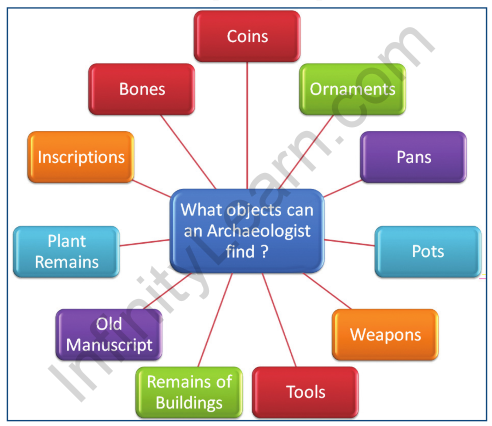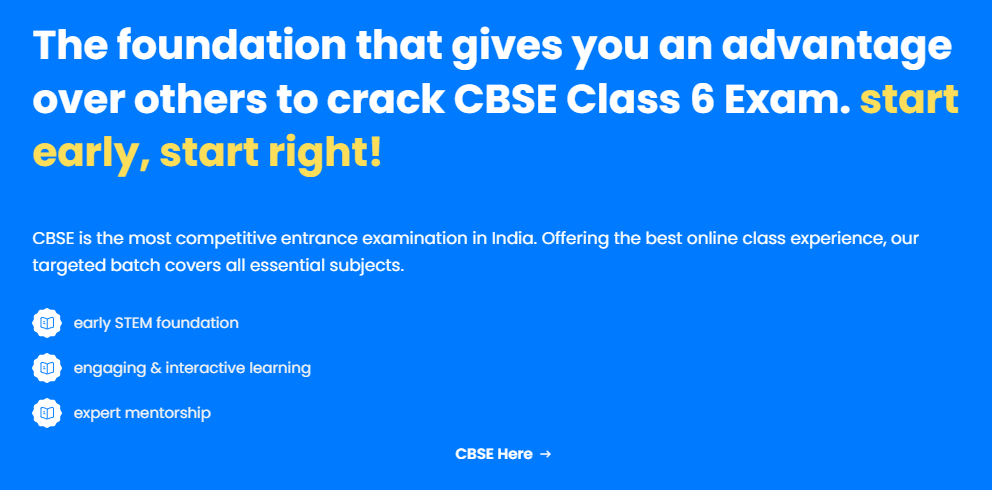Table of Contents
NCERT Solutions for Class 6 Social Science History Chapter 1
Infinity Learn NCERT Solutions for Class 6 History Chapter 1, aligned with the CBSE syllabus, provide a comprehensive overview of early human civilization. Titled “What, Where, How, and When?”, this chapter introduces students to key historical questions, such as the concept of time, historical periods, and the influence of geography on history.
These NCERT solutions, designed by Infinity Learn, are carefully crafted to offer clear and detailed explanations, aiding students in understanding historical events and their significance. They are tailored to enhance analytical and critical thinking skills, ensuring a deep understanding of historical concepts. Following CBSE guidelines, Infinity Learn’s NCERT Solutions for Class 6 History Chapter 1 are an invaluable resource for students looking to excel in Social Science studies, providing expert guidance and interactive learning experiences.
Also Check: Class 6 Social Science Syllabus
NCERT Solutions for Class 6 Social Science History Chapter 1 – What, Where, How and When? PDF Download
NCERT Solutions for Class 6 History (Our Pasts – I) Chapter 1 What, Where, How and When?
Class 6 History Chapter 1 What, Where, How and When? Textbook Questions and Answers
1. Match the following:
| Narmada Valley | The first big kingdom |
| Magadha | Hunting and gathering |
| Garo hills | Cities about 2500 years ago |
| Indus and its tributaries | Early agriculture |
| Ganga Valley | The first cities |
Ans.
| Narmada Valley | Hunting and gathering |
| Magadha | The first big kingdom |
| Garo hills | Early agriculture |
| Indus and its tributaries | The first cities |
| Ganga Valley | Cities about 2500 years ago |
2. List one major difference between manuscripts and inscriptions.
Ans. One major difference between manuscripts and inscriptions is that manuscripts were written on palm leaves or on the specially prepared bark of a tree known as the birch, which grows in the Himalayas, whereas inscriptions are written on hard surfaces such as stone or metal
Let’s discuss – Page No. 9
3. Return to Rasheeda’s question. Can you think of some answers to it?
Ans. Rasheeda’s question was how could anyone know what had happened so many years ago. There are various ways by which people can know about the past.
- The remains left by the early man in the form of tools, weapons, pottery, jewelry, etc.
- Manuscripts and inscriptions give us information about these people.
4. Make a list of all the objects that archaeologists may find. Which of these could be made of stone?
A. The answer can be summarized through this flow diagram:

Ans. Archaeologists may find “tools, weapons, pots, pans, ornaments and coins. Out of these tools and weapons were made of stone.
5. Why do you think ordinary men and women did not generally keep records of what they did?
Ans.
- Ordinary men and women did not keep a record of what they did because they did not fi nd the events of their daily lives to be of such significance that they had to be recorded.
- Most of the ordinary men and women did not know how to read and write.
- Moreover, hiring a person to keep a record of daily events was an expensive proposition.
- On the other hand, it was not too difficult for kings and rulers to hire chronicles to record what they did or what was happening in or around their territories.
- Moreover, they thought that the recording of events was an important way of recording history and letting it pass on to succeeding generations.
6. Describe at least two ways in which you think the lives of kings would have been different from those of farmers.
Ans. The lives of kings would have been different from the farmers in the following two ways:
- The kings keep the record of their daily life and their victories, whereas the farmers do not.
- The kings protect people in times of war and make their life secure, whereas the farmer provides food to them.

Let’s do – Page No. 9
7. Find the word ‘crafts persons’ on-page of the textbook, in the list at least fi ve different crafts that you know about today. Are the craftspersons-(a) men (b) women (c) both men and women.
Ans. The various crafts that dominate the present life are listed here:

These crafts persons are both men and women.
8. What were the subjects on which books were written in the past? Which of these would you like to read?
Ans. Ancient books covered subjects like:
- Religious beliefs and practices
- Lives of kings
- Medicine
- Science
- Poetry
- Drama
- Epics
It would be really interesting to read the epics of the past. The Ramayana, The Mahabharata and the Upanishads are some of the religious epics of the past.
- Chapter 1 What, Where, How, and When?
- Chapter 2 On The Trail of the Earliest People
- Chapter 3 From Gathering to Growing Food
- Chapter 4 In the Earliest Cities
- Chapter 5 What Books and Burials Tell Us
- Chapter 6 Kingdoms, Kings and the Early Republic
- Chapter 7 New Questions and Ideas
- Chapter 8 Ashoka, The Emperor Who Gave Up War
- Chapter 9 Vital Villages, Thriving Towns
- Chapter 10 Traders, Kings, and Pilgrims
- Chapter 11 New Empires and Kingdoms
- Chapter 12 Buildings, Paintings, and Books
NCERT Solutions for Class 6 Social Science History – Our Past Chapter-1 Overview
This chapter, What, Where, How, and When, explains how people lived in the past, what their lifestyle was like, and many other historical details. The essential archaeological principles are covered in Chapter 1 of Class 6 History. Learners in CBSE Class 6 History Chapter 1 learn about archaeologists’ jobs and the benefits of archaeology. This NCERT Class 6 History Chapter 1 discusses the process of discovering what happened in the past. In Infinity learn NCERT solution for Class 6 History Chapter 1, some essential topics about the past are covered in a very straightforward manner, such as how earlier men used stones to manufacture weapons out of them, their community, and the primary big kingdoms.
The first chapter of NCERT Class 6 Social Science begins with a question that emerges in Rasheeda’s head when she is reading the newspaper. This NCERT History book Class 6 Chapter 1 systematically assists her in answering all of her questions and queries by simply and easily discussing the way people lived and the places they inhabited, the names of those places, and the knowledge we gain from the manuscripts excavated and the signs and symbols deciphered that were used by the people who are still alive today.
Archaeologists discovered stone and brick structures that reveal a lot about people’s lifestyles at the time. They also discovered paintings and sculptures, as well as tools and weaponry, as well as other cooking utensils such as pots and pans. Archaeologists also discovered jewellery and other sorts of cash that they utilized at the time. This NCERT Class 6 History Chapter 1 also discusses how people used to keep records in the past. They used to engrave their records on stones, rather than on paper, as we do nowadays.
The lifestyle of people who lived at a young age is one of the topics covered by the NCERT class 6 social science History chapter 1.
- They lived in certain places.
- Manuscripts, inscriptions, and stone carvings
- Dates are given in BC and CE.
| Other Resources for Class 6 | |
| Worksheets for Class 6 All subjects | CBSE Notes Class 6 |
| NCERT Books for Class 6 | Online Tuition for Class 6 |
FAQs on NCERT Solutions for Class 6 History Chapter 1
What is the first chapter of history class 6?
The first chapter of Class 6 History in the NCERT textbook is 'What, Where, How, and When?' It introduces students to the basics of studying history, including the concepts of time, historical periods, and the importance of geographical locations.
How can we know about the past class 6 short answer?
In Class 6, we can know about the past by studying historical sources such as manuscripts, inscriptions, artifacts, and monuments. These sources help historians understand the events, cultures, and people of the past.
What do you mean when you say manuscripts?
Manuscripts are handwritten documents from the past. They include books, letters, and scrolls that were written by hand before the invention of printing. Manuscripts are important historical sources that provide information about ancient cultures and knowledge.
What is the difference between BC and AD?
BC (Before Christ) refers to the years before the birth of Jesus Christ, while AD (Anno Domini, Latin for 'in the year of our Lord') refers to the years after his birth. BC is used for dates before year 1, and AD is used for dates from year 1 onwards.
What do you mean by the terms historian and source?
A historian is a person who studies and writes about the past, analyzing historical events and sources. A source is any material or evidence that provides information about the past, such as documents, artifacts, or oral traditions. Historians use sources to reconstruct and interpret history.









